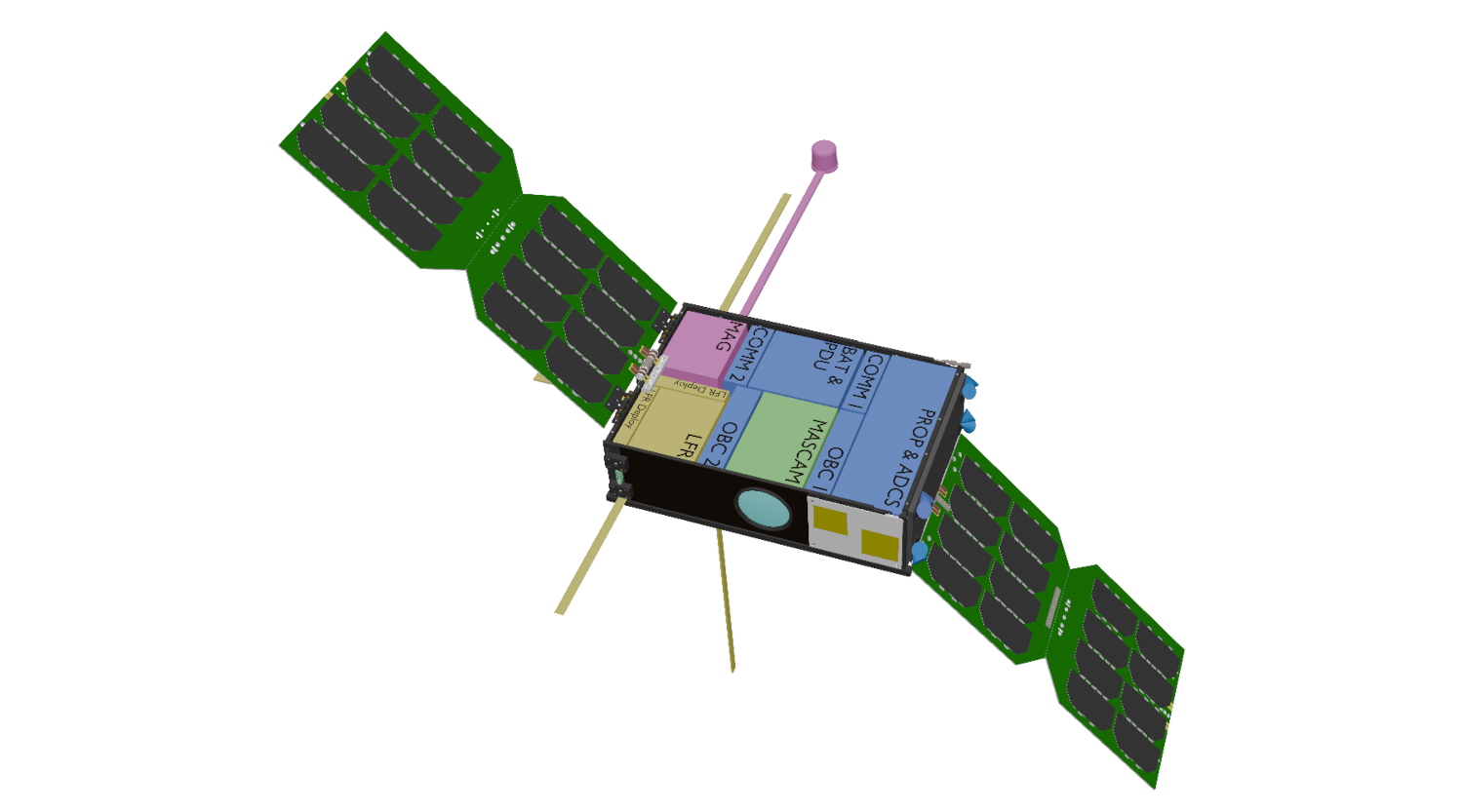- University of Würzburg, Institute of Computer Science, Professorship for Space Technology, Germany (jonathan.maennel@uni-wuerzburg.de)
Due to the increased performance of small satellites, their use in the exploration of asteroids is becoming increasingly more important. The DART mission with the CubeSat LICIACube or the Hera mission with the two CubeSats Milani and Juventas demonstrated this. Also, in the context of exploring the asteroid (99942) Apophis during its flyby of Earth in 2029 many concepts rely on the use of small satellites, which is illustrated i.e. by the plans for the RAMSES mission and the DROID mission.
The primary challenge for all mission concepts investigating (99942) Apophis is to secure funding and to meet the tight implementation schedule. In the context of the NEAlight project (Grant No. 50OO2413), carried out by IFEX at the University of Würzburg, these issues are addressed by examining three different mission concepts for a national small satellite mission in parallel: The concepts are designed to cover different mission complexities and cost constraints, and to allow utilization of different launch options, thus providing variation in implementation timescales.
RAMSES CubeSat Contribution
The first mission idea is the support of the European RAMSES mission by developing a CubeSat which aims to complement the science objectives of the RAMSES mission by providing valuable insights into the physical characteristics and possible surface changes in pre- and post- Earth closest approach (ECA) phase of (99942) Apophis. These are specifically done by observing the internal composition, shape, and dynamic state of the body. In addition, this mission concept aims to characterize the magnetization of (99942) Apophis and the plasma interactions as it passes through the Earth's magnetosphere. Table 1 shows an overview to said scientific contributions with specific instruments performing the respective measurements. Therefore, a suitable CubeSat bus must be capable of handling the deep-space environment, as well as operations in the close proximity of the asteroid. At this place the 6U+ SONATE-2 bus, which is developed and built inhouse at the University of Würzburg, serves as a viable foundation. This bus has flight heritage already and has been designed with future use in space exploration missions in mind, with a particular focus on mission autonomy and operating AI and advanced image processing hardware in space environment. Figure 1 shows an exemplary layout of this bus adapted for the mission.
|
Optical Observations |
Secondary measurements: Complementary observations from various angles alongside RAMSES observations. |
Camera system based on MASCAM, 1U-design, focal length ~35mm |
|
Radar Measurements |
Unique measurements as a direct contribution to the scientific objectives of RAMSES |
LFR based on JuRa instrument, BSPK-coded radar with 60MHz carrier, 1U electronic box plus cross-dipole antenna |
|
Magnetometer |
Distinct measurement beyond RAMSES scientific objectives, not covered by OSIRIS-APEX |
Set of vector-compensated 3-axis fluxgate magnetometers, mounted on deployable structure |
Tab. 1 Scientific Contributions to the RAMSES mission and respective instruments on the CubeSat

Fig. 1 Top level concept of the CubeSat to accompany the RAMSES Spacecraft based on the SONATE-2 bus.
Apophis Encounter Mission
An independent German small satellite could study (99942) Apophis, should the RAMSES mission not receive funding. The satellite is aimed to be designed in such a way that it can serve as a template for further missions to near-Earth asteroids (NEA) in cislunar space and beyond. One of the main tasks is the selection of the trajectory and the propulsion system for the autonomous deceleration at (99942) Apophis if no transfer vehicle can be used. The launch is estimated to be in 2028 at the latest, as otherwise the fuel or time constraints may not be met. In contrast to the SATIS mission, however, the focus is here on a small satellite in the size class of approx. 27U. Depending on the final design of the trajectory, an observation period of up to two months before the ECA is assessed to be possible. Based on current announcements the usage of commercial transfer vehicles might be feasible.
Apophis Interceptor Mission
The near-Earth fly-by of (99942) Apophis also offers the opportunity to conduct a relatively inexpensive mission using a small satellite. From a few kilometers away a set of high-resolution images of (99942) Apophis at its closest approach can be captured, while also demonstrating a versatile deep-space bus for future NEA fly-by missions. A key advantage is the flexibility in the launch window, including a launch option in 2029. Additionally, launching together with similar mission concepts can further reduce costs, making this concept even more feasible with restricted budgets.
Because of the comparatively low costs of this small satellite missions and the trend of increased launch opportunities into cislunar space in the coming years, these missions class seems ideal for the exploration of near-Earth asteroids in general. In this way, these missions could make a key contribution to understanding the formation and evolution of the solar system, as well as to planetary defense against potentially dangerous asteroids.
Acknowledgments: This work is part of the NEAlight project funded by the Federal Ministry for Economic Affairs and Climate Action (BMWK) through the German Aerospace Center (DLR) based on a decision of the German Bundestag (Grant No. 50OO2413).
How to cite: Männel, J., Neumann, T., Kayal, H., Riegler, C., and Amza, A. A.: Concepts for a German Small Sat Mission to (99942) Apophis, Europlanet Science Congress 2024, Berlin, Germany, 8–13 Sep 2024, EPSC2024-1098, https://doi.org/10.5194/epsc2024-1098, 2024.